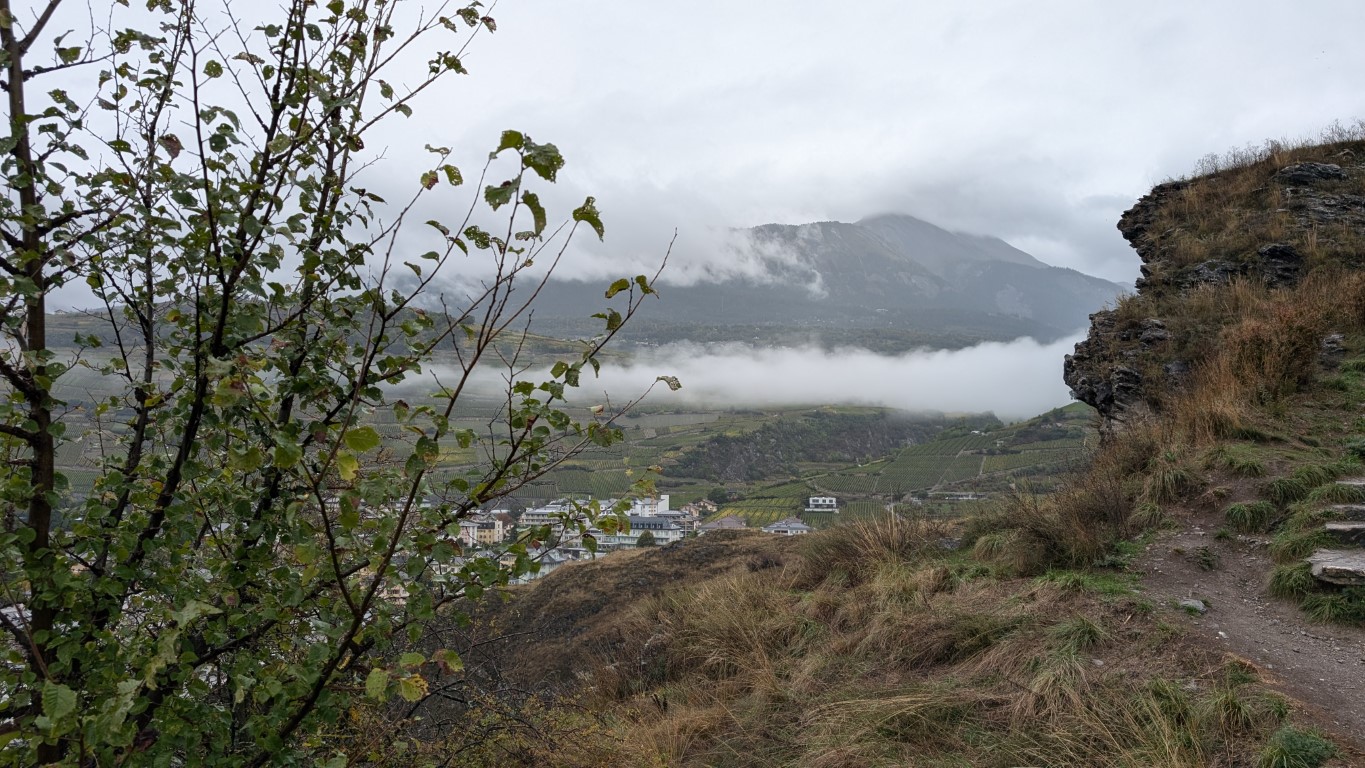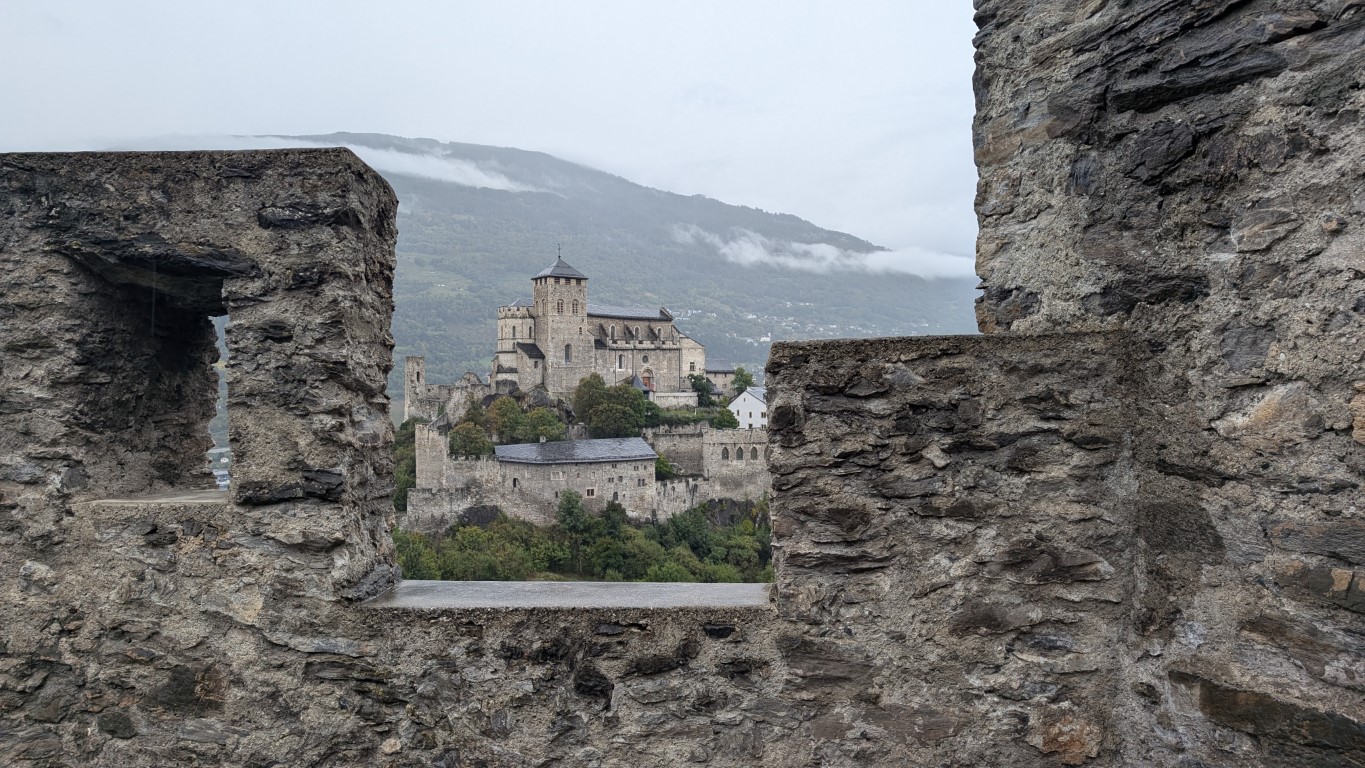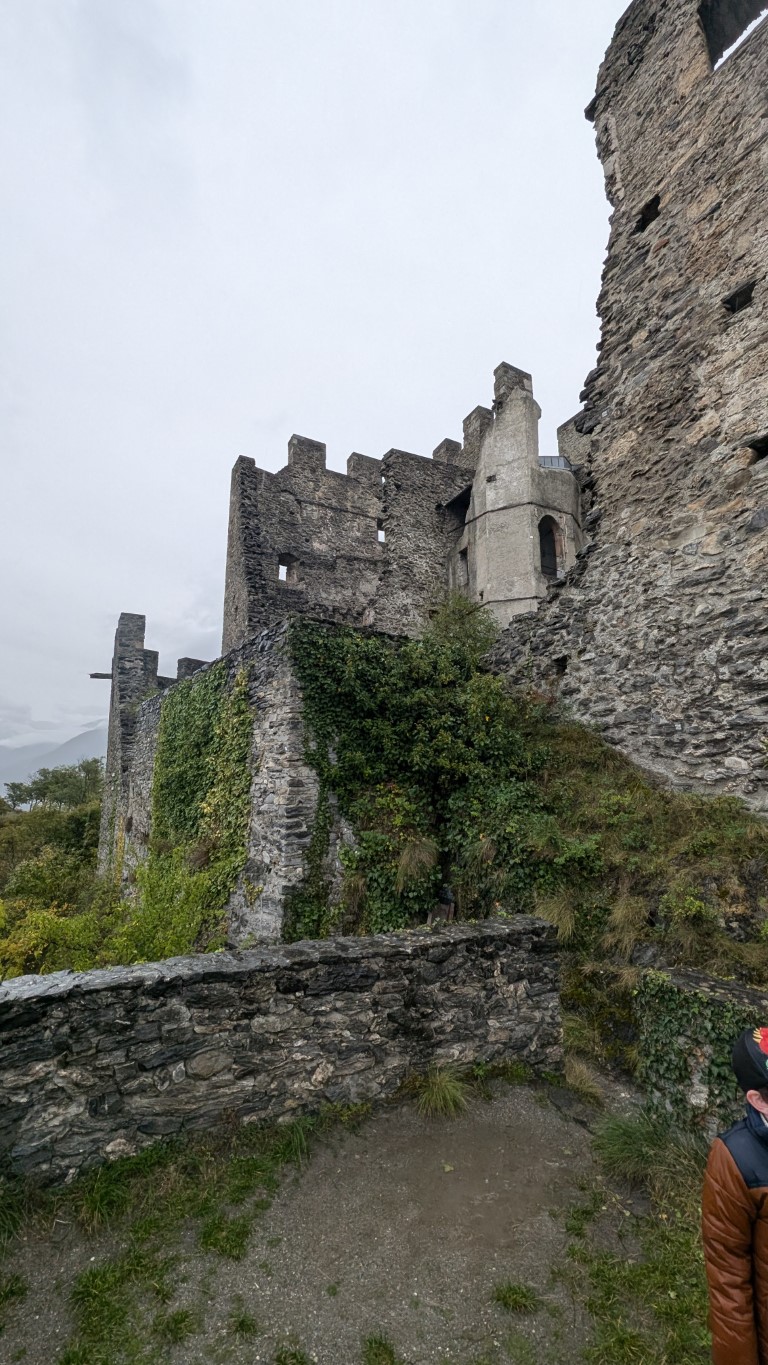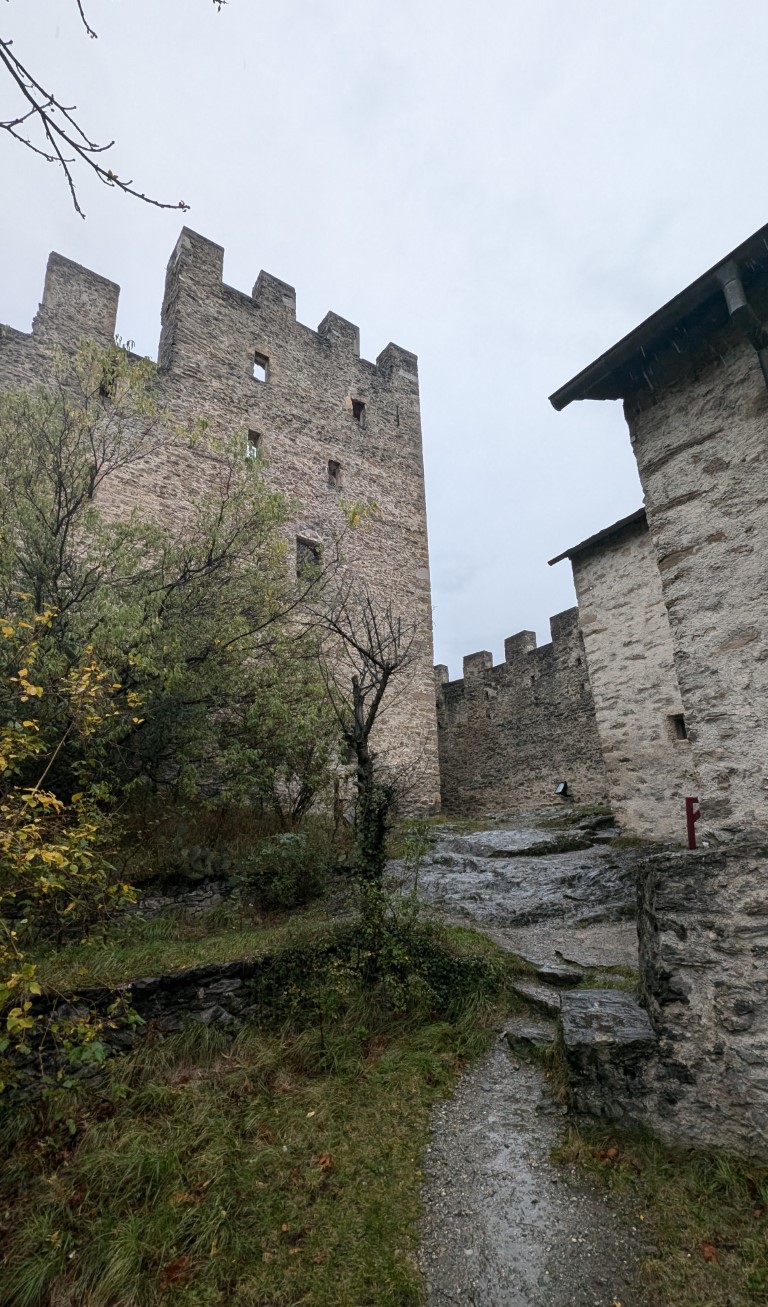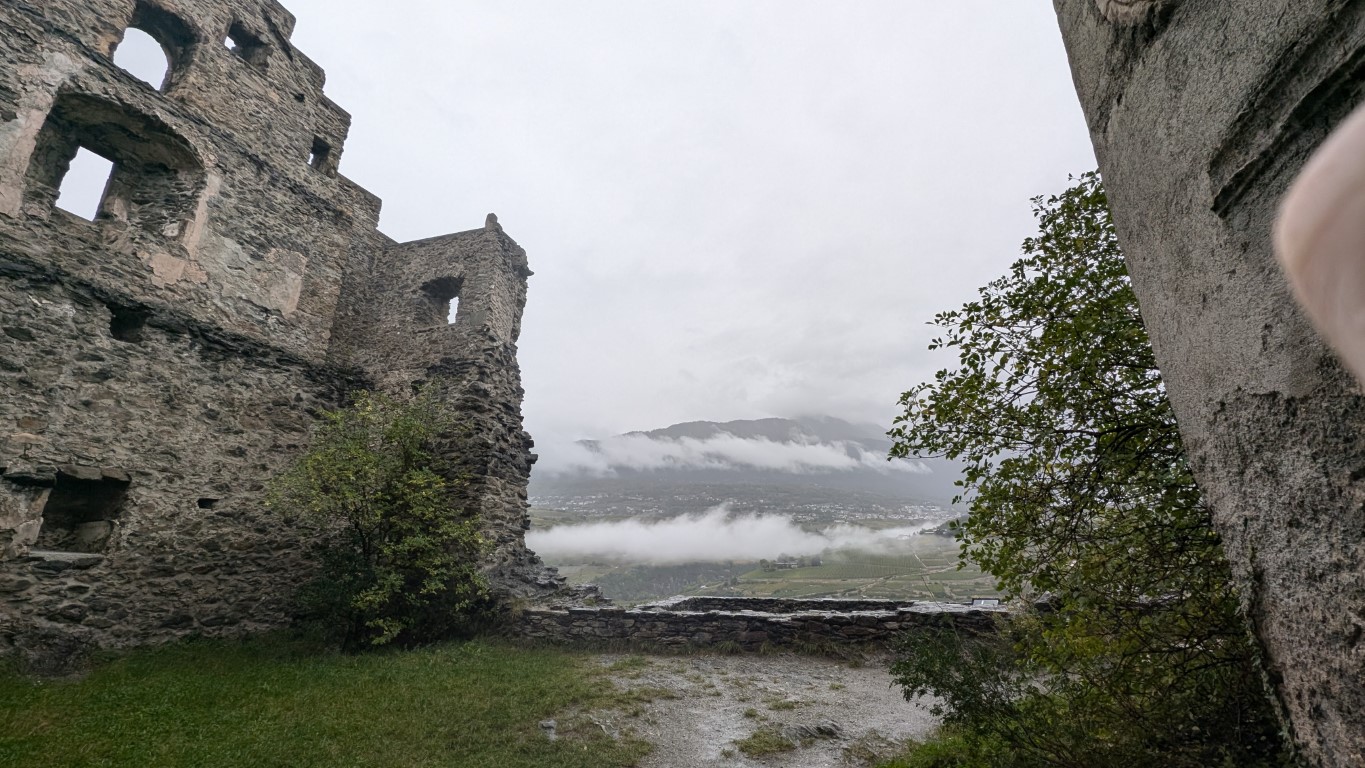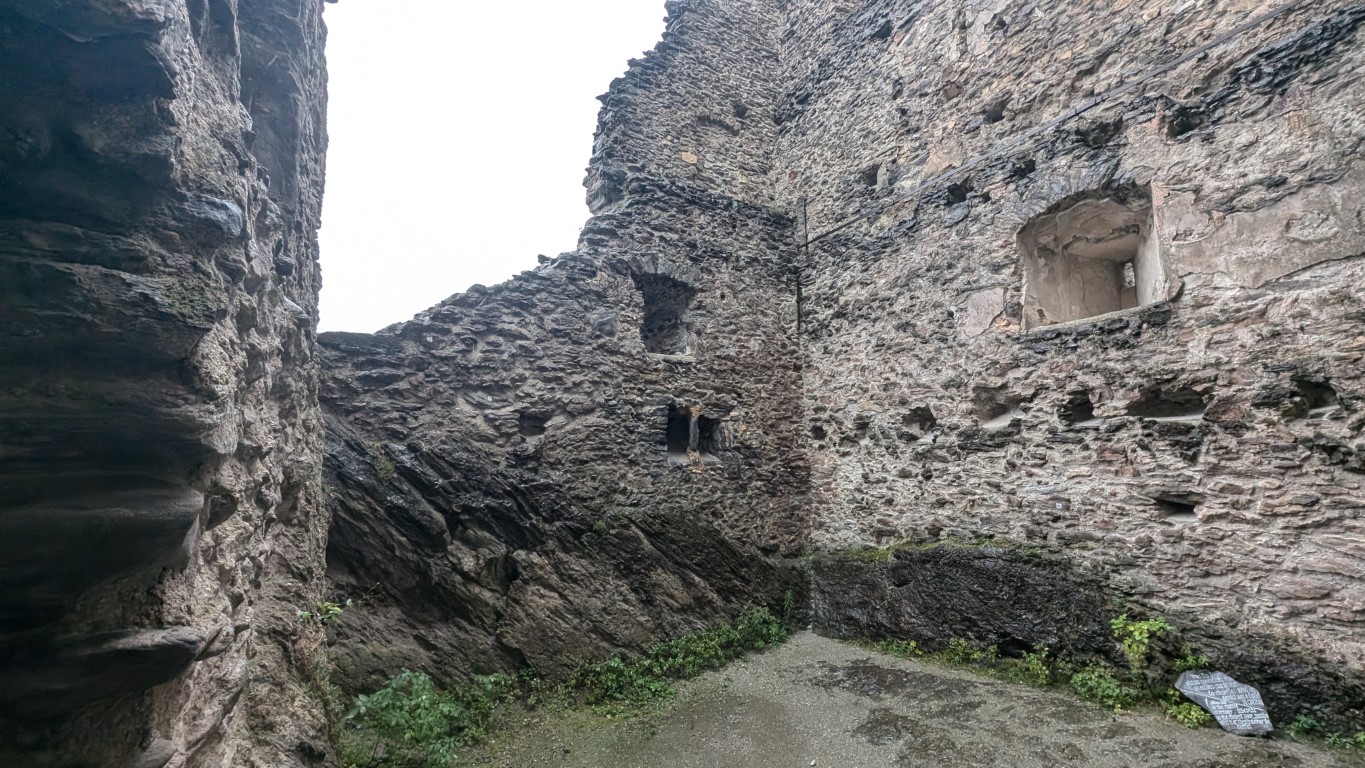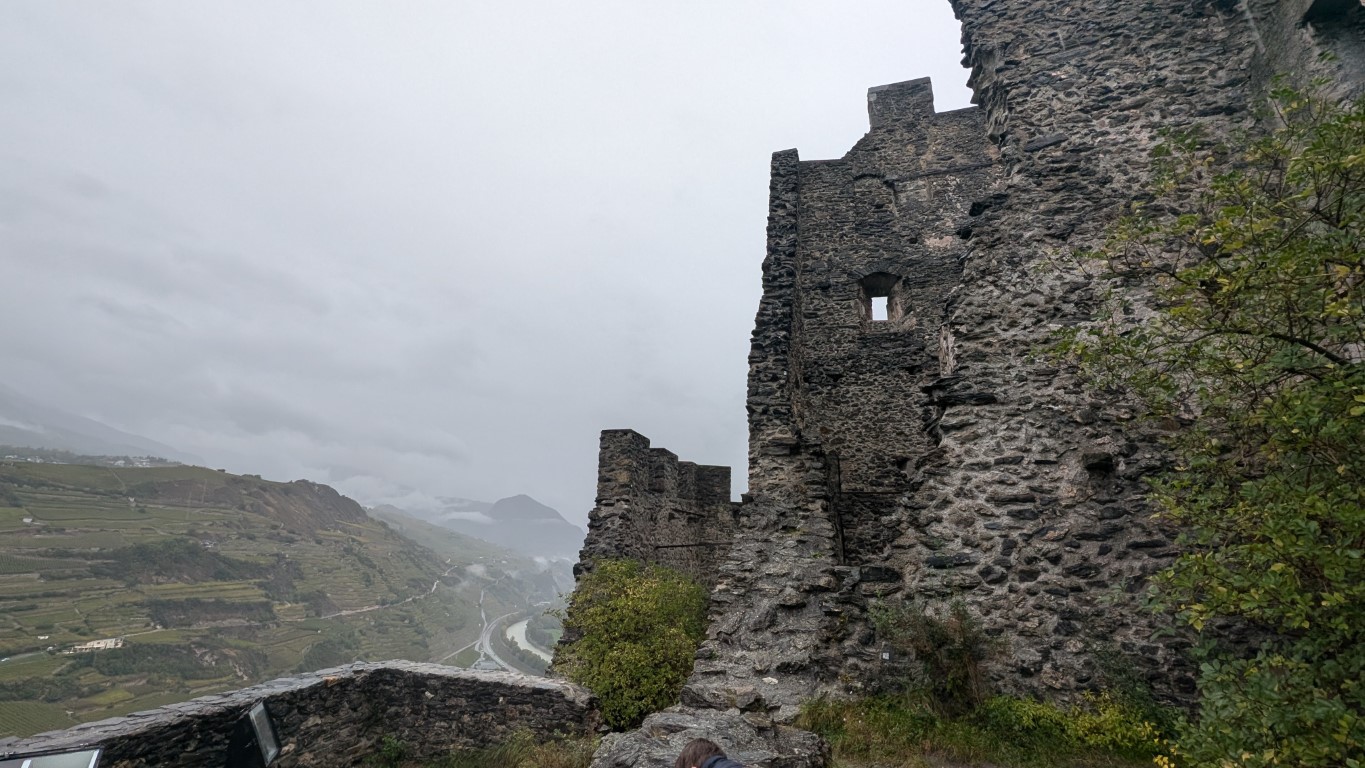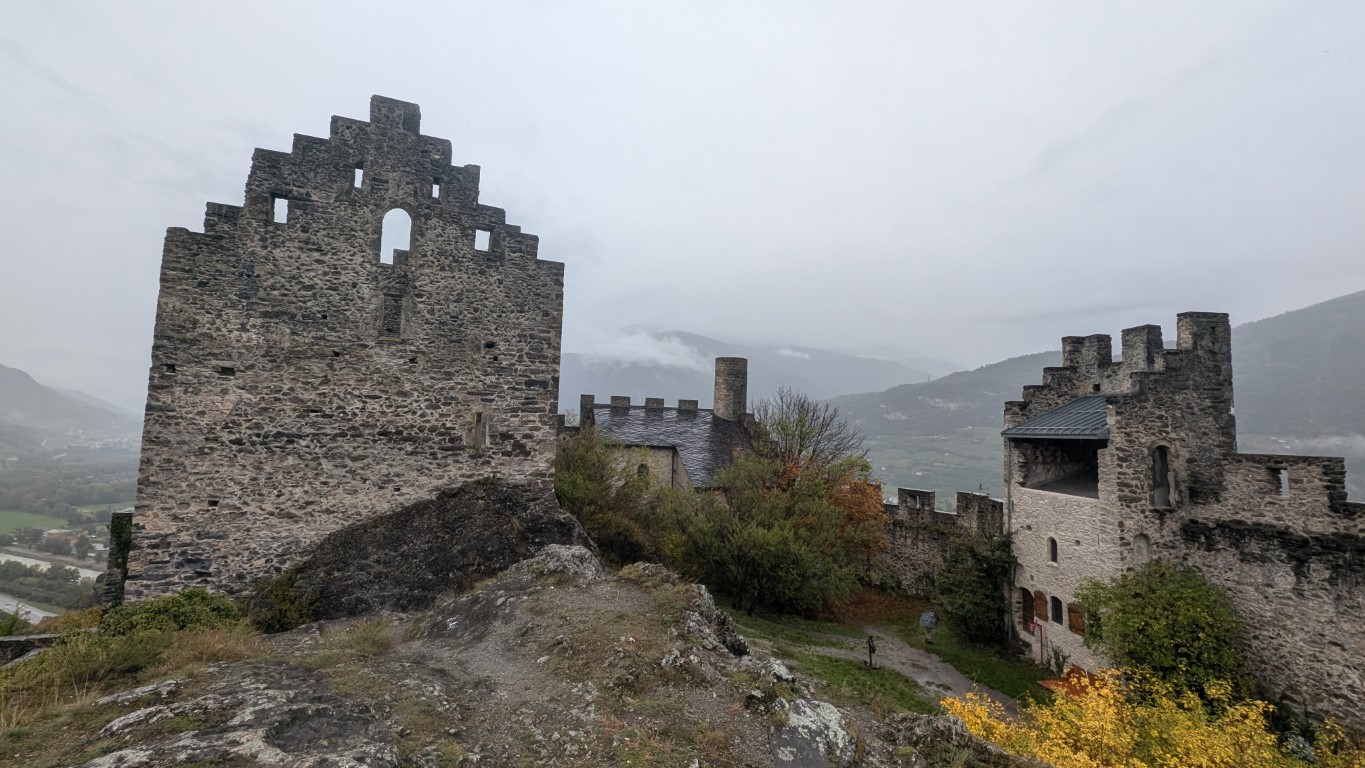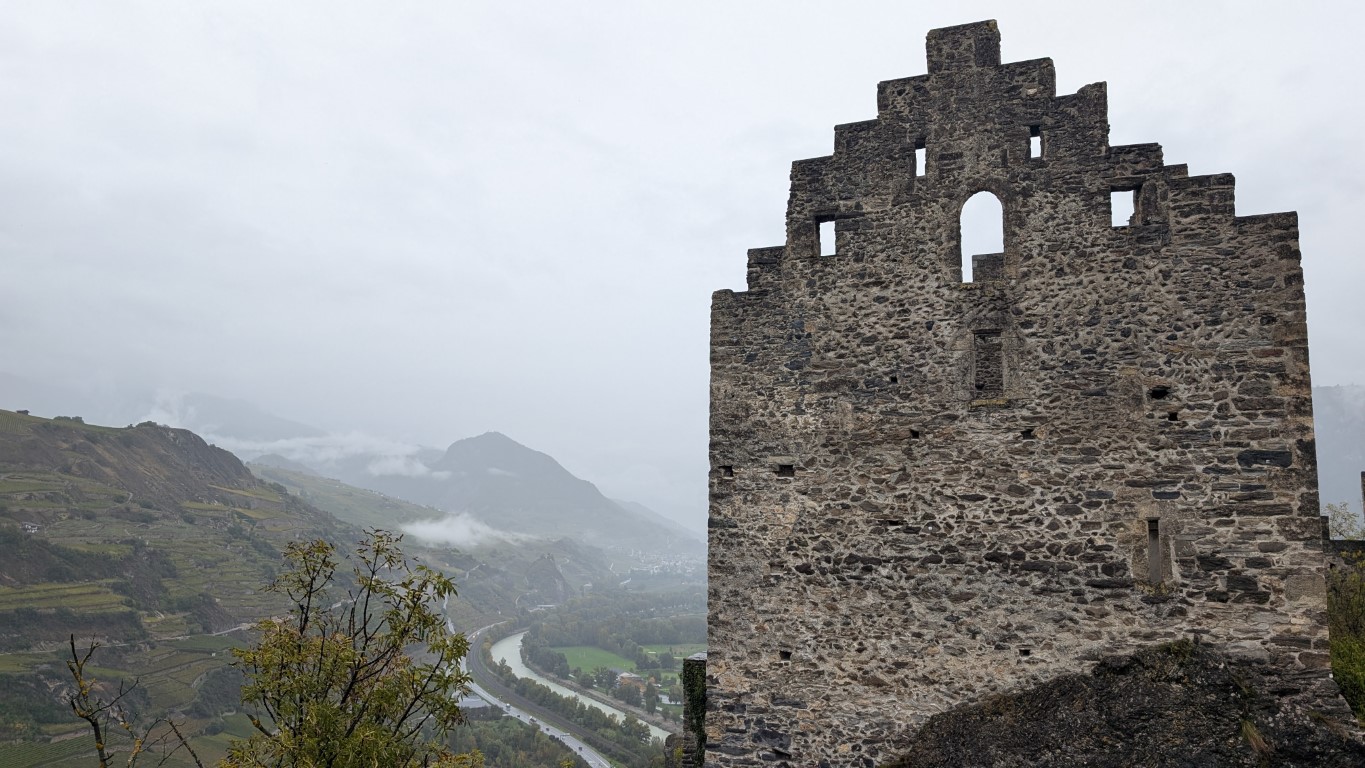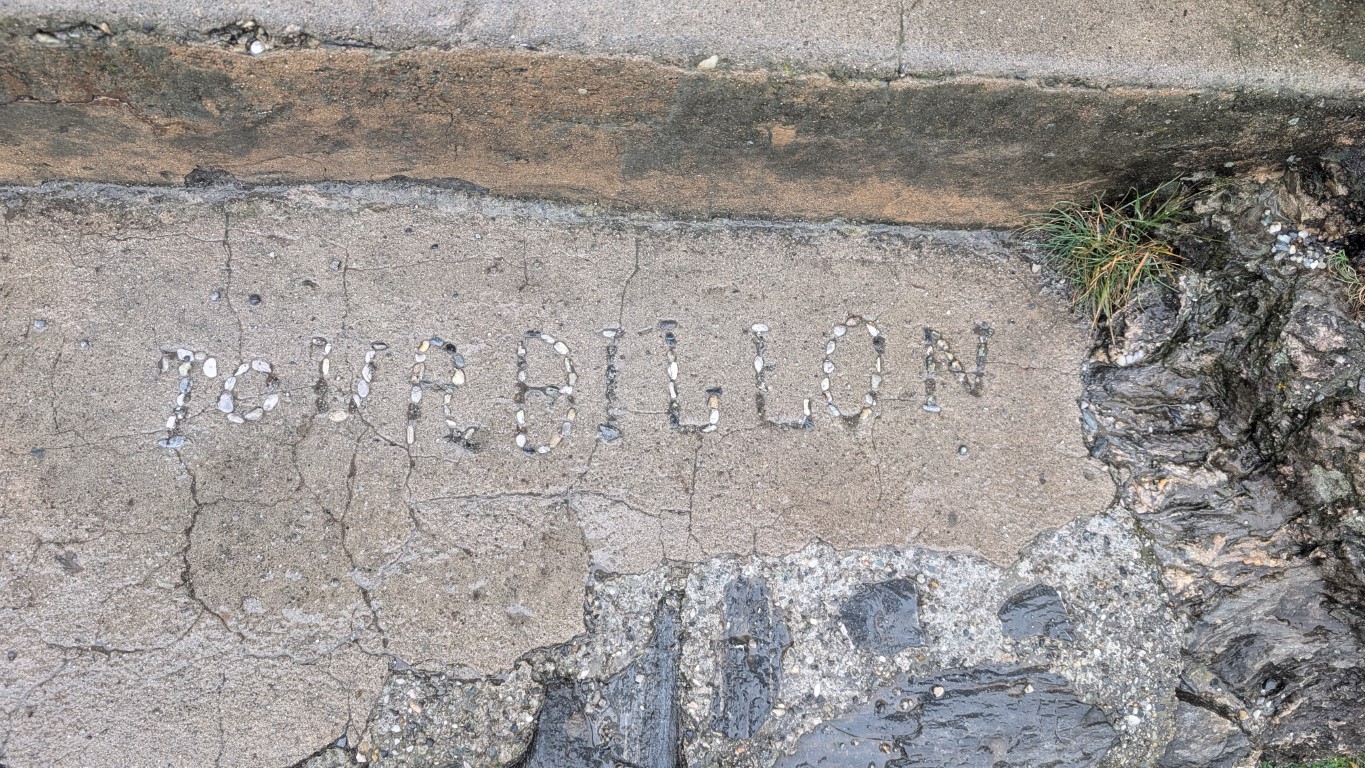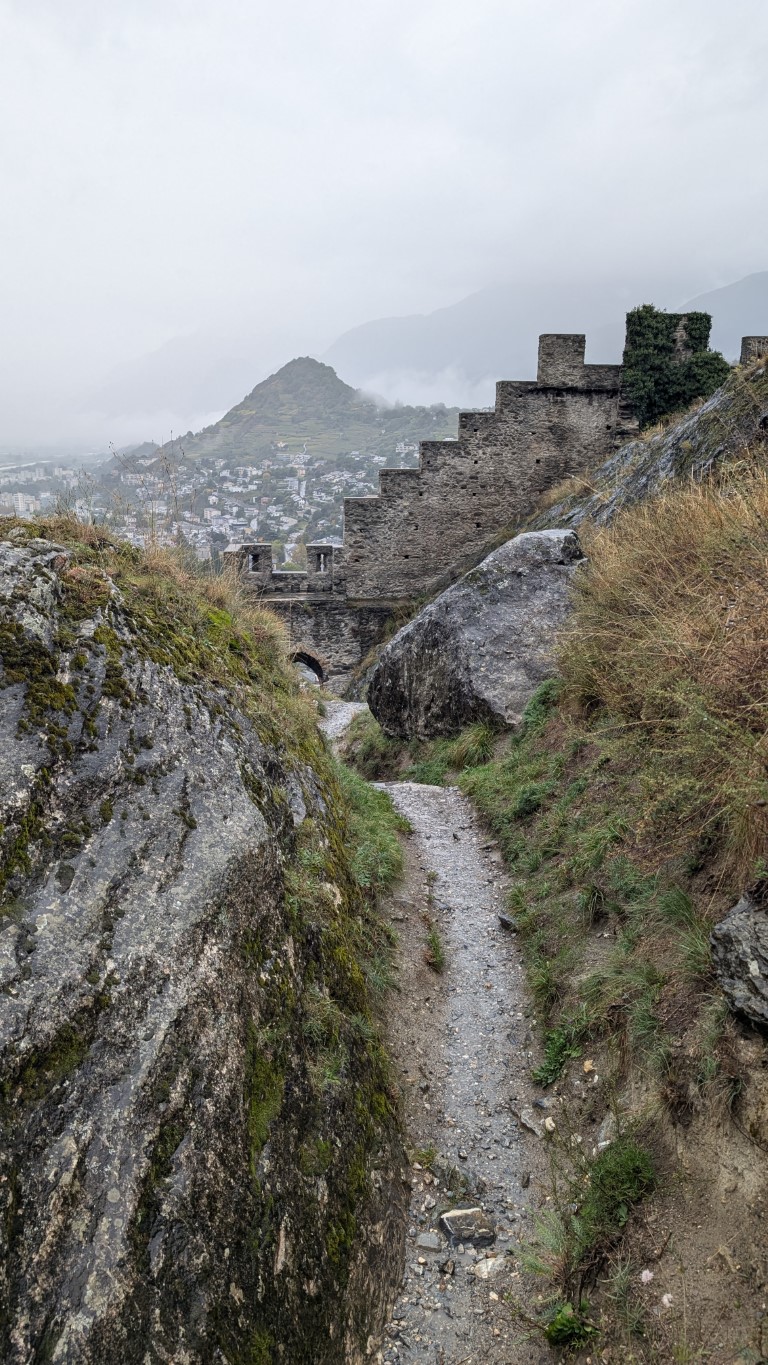Like a guardian of time, Tourbillon Castle stands on its majestic hill, high above the city of Sion, a silent witness to days long gone. Nestled in the protected natural area, it seems as if the wind blowing over its rugged walls whispers the ancient stories of the knights and bishops who once walked its stone halls.
The mighty building owes its existence to Bishop Boniface de Challant, who was summoned from the misty valleys of Savoy to build his residence here at the turn of the 13th and 14th centuries. With each stone that was laid, not only the castle grew, but also its reputation as an impregnable bastion that almost seemed to touch the sky. Opposite, on the Valeria hill, rests its eternal sister, the basilica, and together they watch over the valley like two old souls who always keep an eye on each other.
But time is unforgiving, and in 1788 a devastating fire spread. Flames licked at the walls of the castle, licking greedily at the old wooden ceilings until only ruins remained. Part of the city of Sion also fell victim to this fiery wrath, and the proud Tourbillon Castle fell into a deep silence.
But not everything was lost. In the midst of the stone remains, the Chapel of Saint-Georges and Saint-Grat still stands, telling stories from another time with its wonderful frescoes. The first cycle of paintings was created here at the beginning of the 14th century, bringing the saints and legends to life in soft colors. It was as if the walls themselves breathed the sacred.
In the 15th century, when the tireless Bishop Guillaume de Rarogne brought his visions to the walls of this chapel, another cycle of paintings was created. This one breathed new life into the old stones, with bright colors and delicate figures dancing in the golden twilight of the late Middle Ages. Even today, the chapel, shrouded in an aura of mystery, seems to preserve the dreams of those who once lived in the shadows of its walls.
Thus, Tourbillon Castle stands, a monument made of time and dust, symbolizing the eternal connection between power, faith and transience. It invites those who climb the hill to feel the pulse of history and to be carried by the legends that still echo softly in every corner, in every breath of wind.
Story
Around 1300, Bishop Boniface de Challant had the castle of Tourbillon built as his main residence. Between 1320 and 1340, the chapel was decorated with a first cycle of wall paintings. In 1373, Bishop Guichard Tavel acquired the tower of La Majorie and made it the episcopal centre of power, while Tourbillon retained its defensive and symbolic role. In 1417, during the Raron Wars, the castle was devastated. In the middle of the 15th century, Bishop William of Raron had the castle rebuilt and a new cycle of paintings made for the chapel.
In 1788, the castle fell victim to a major fire and was never rebuilt. At the end of the 19th century, the first conservation measures on the ruins began. Between 1965 and 1969, the wall paintings were restored, and from 1993 to 1999, further stabilization work on the masonry was carried out. In 1999, the diocese of Sion handed the castle over to a foundation for conservation. In 2022, a new floor was inaugurated in the western part, which is used for cultural events.
myths and mysteries
The legends surrounding Tourbillon Castle are woven with secrets, power struggles and mystical tales that reach into the misty valleys of the Valais. Built high on a rocky hill where Neolithic tribes once lived, Tourbillon stands like a mighty fortress guarding the land. Long before the castle was built by Bishop Boniface de Challant around 1300, it is said that this place served as a sacred and strategic observatory, a place where the stars determined the future of rulers.
The chapel, with its early 14th-century frescoes depicting St George slaying a fearsome dragon before the eyes of a captive princess, holds dark secrets of its own. It is rumored that the dragon is not just a creature of legend, but rests in the depths of the mountain, bound by ancient powers until one day it shall awaken. Some believe that the dragon caused the great fire of 1788 that destroyed the castle and part of the city of Sion. In the heat of that night, a huge shadow is said to have risen in the sky as the flames engulfed Tourbillon.
But the castle was not only a place of magic, but also a bulwark in the endless battles of the Middle Ages. In the 15th century, during the Raron Wars, it was burned and ravaged by fierce enemies. It is said that the walls were defended by invisible warriors who were once loyal to the bishops and now watch over the castle as ghosts. Even after Guillaume of Raron rebuilt it, the ruins of Tourbillon remained a place where the past manifested itself in whispering voices.
When the castle passed into the hands of the modern world after centuries of neglect, the people of Sion tried to restore the ruined site. But as hard as they repaired the walls, the myths surrounding this enchanted place grew. It is said that at night, when the moon is high over the Valais, an ancient, ominous glow emanates from the ruins - as if the ghost of Tourbillon, once consumed in flames, will never truly rest.
Even today, the ancient legends echo through the cracks in the walls, and those who have the courage to disturb the silence of the place may be able to recognize the forgotten warriors and the sleeping dragon in the shadows.
Access
The ruins are freely accessible. Parking is available in the Sion Nord parking garage.











